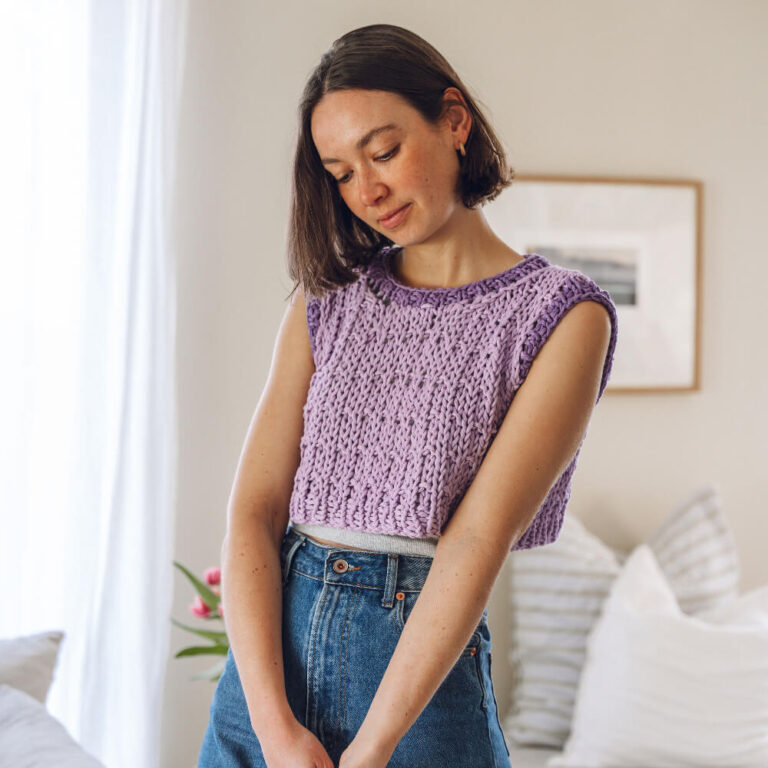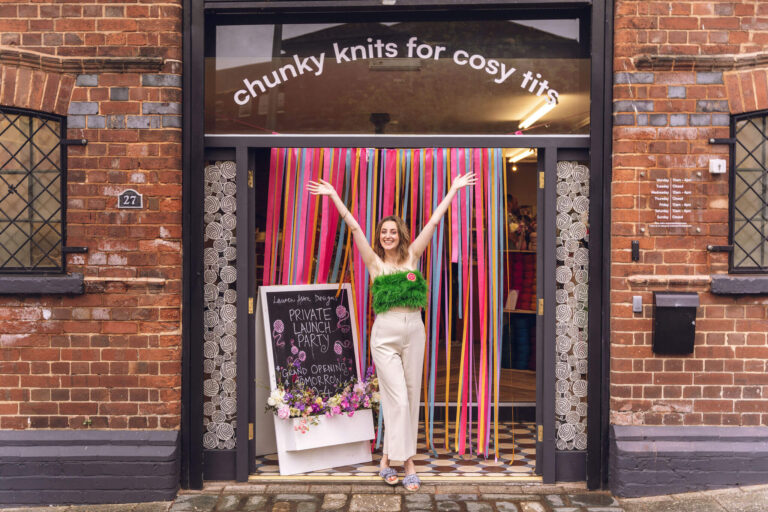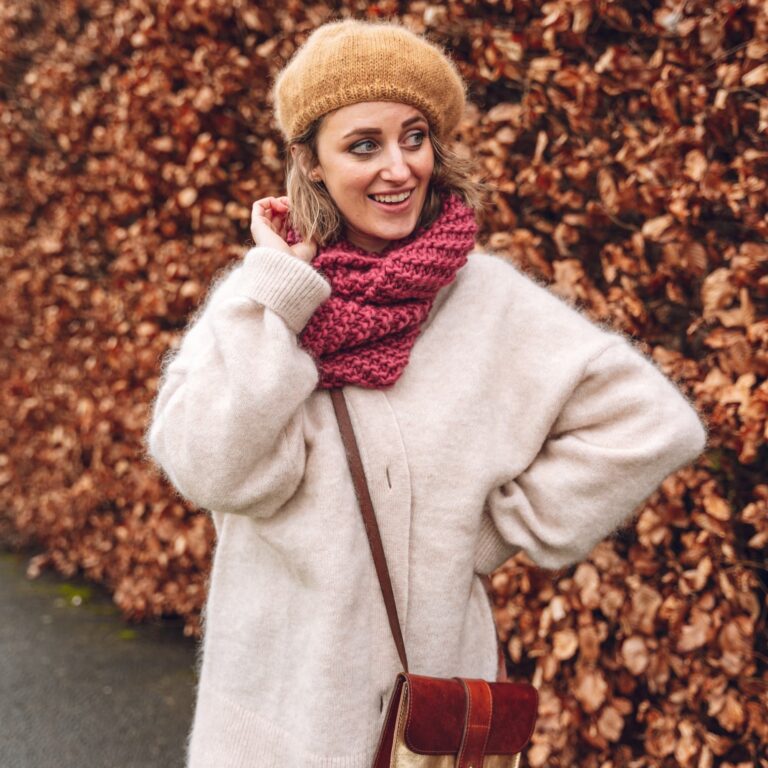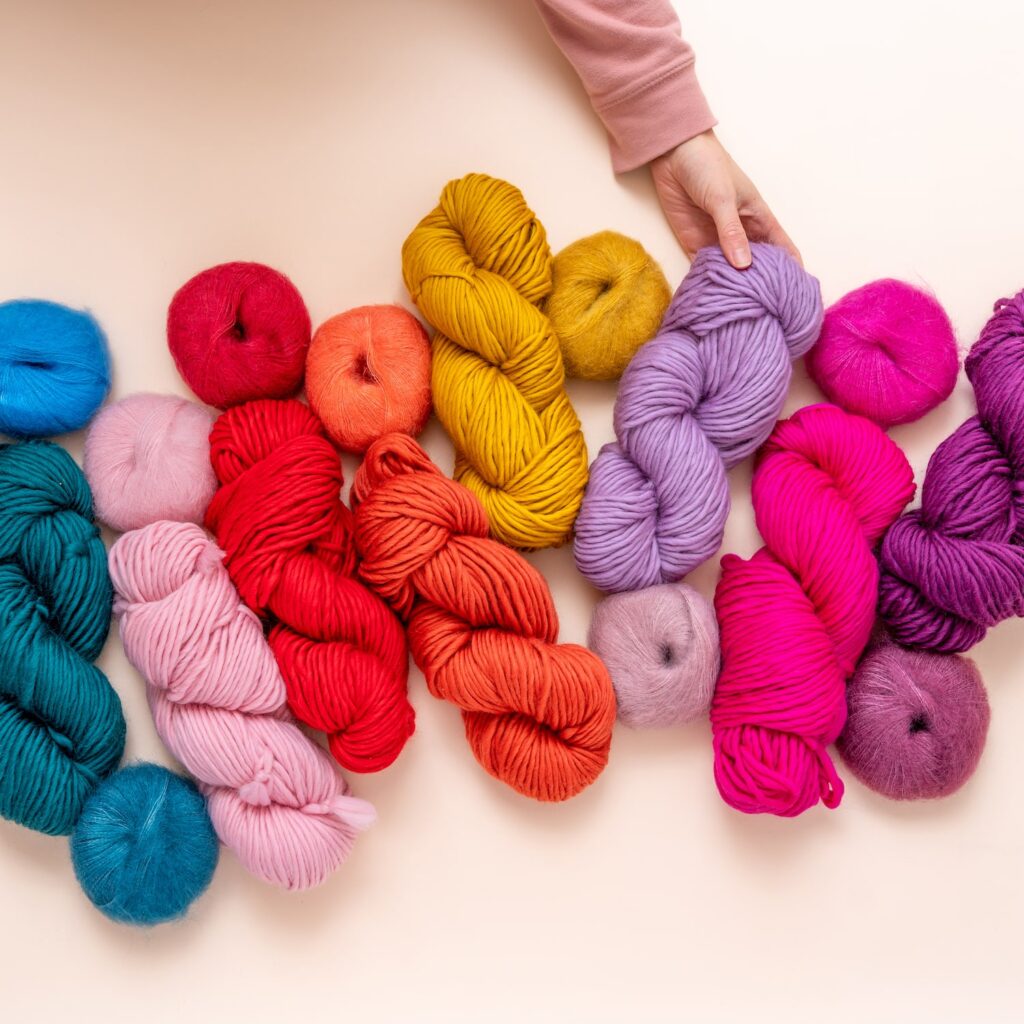What even IS tension?
Essentially tension is just how many stitches and rows you fit into 10cms. It’s how we check if our knitting will be the same size as the pattern.
Say for instance we both knit the same pattern in the same yarn, using the same size needles but you pull your yarn tight and I leave mine quite loose on the needles…. this will mean that you cram more stitches into your 10cm than I do. As a result, your knitting will be tighter than mine. When you scale this up to such chunky yarn (especially with big panels of knitting like on the cardigan) this can have a really big impact. Therefore the knitting that we’ve both made from the same pattern might look very different.
You can see from the image below what a MASSIVE difference this can make. Everything about the cardigans below is the same apart from the fact they were knit by two different people who’s tensions differed….
(I nearly fell over when I first saw this picture, I bang on about tension so much it shouldn’t have been a surprise but isn’t it a HUGE difference?!)
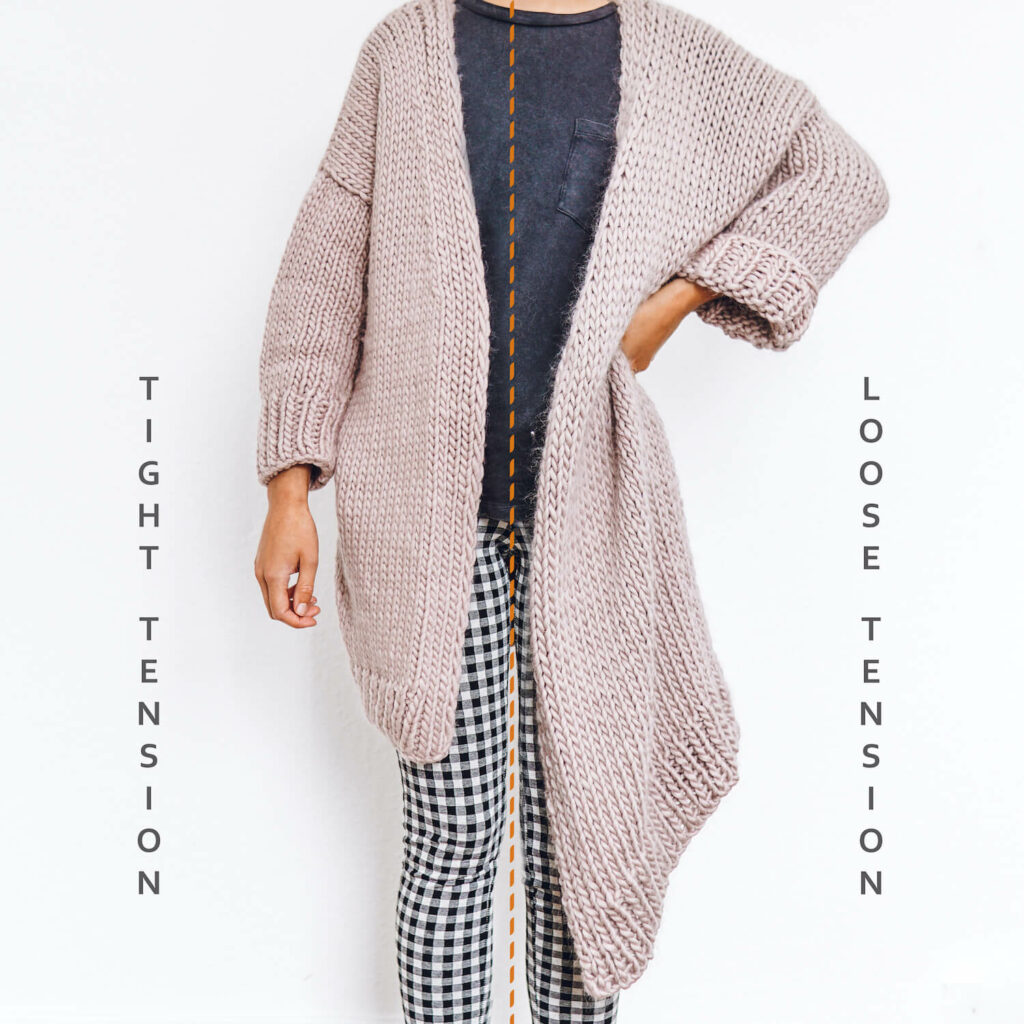
How do we check our tension is correct?
On each pattern there should be a section before you begin knitting that tells you the ‘Gauge’ – this is an example of what your tension should be across the pattern.
F.Y.I. On LAD patterns we give the gauge across the main body of the pattern so if you use small needles for a rib and then larger needles on the main body, the gauge is for the stitch in larger needles, covering the majority of the piece.
Once you know what your tension should be, you need to do a tension swatch to check it. Tension swatches are dull and no one likes to do them because they feel like a waste of time but I’m afraid to say they are important if you want your project to come out the same as the pattern. (If you’re not too fussed and you’re experimenting then absolutely go for it without swatching but otherwise I’d highly recommend it.)
Swatching
It’s important not to make your tension swatch too small as that can be inaccurate. With our big wool you don’t get too many stitches and rows in 10cm anyway so I add the equivalent to about 2cm on every edge minimum.
i.e. if the pattern gauge is ‘8.5 sts & 11 rows to 10cm’ I’d cast on an extra 6 stitches, rounding the .5 up (15 sts total) and knit an extra 5 rows (16 rows total) then I’d measure the space in the middle and compare my tension to the pattern.
Knit your tension swatch in the stitch that your pattern uses. Here’s a made in Stockinette stitch (1 row knit, 1 row purl) which is the most popular stitch in our patterns. Stockinette stitches are easy to count because each stitch looks like the letter V. So to count the stitches count how many ‘V’s run across and to count the rows count how many ‘V’s run down…. As shown below.
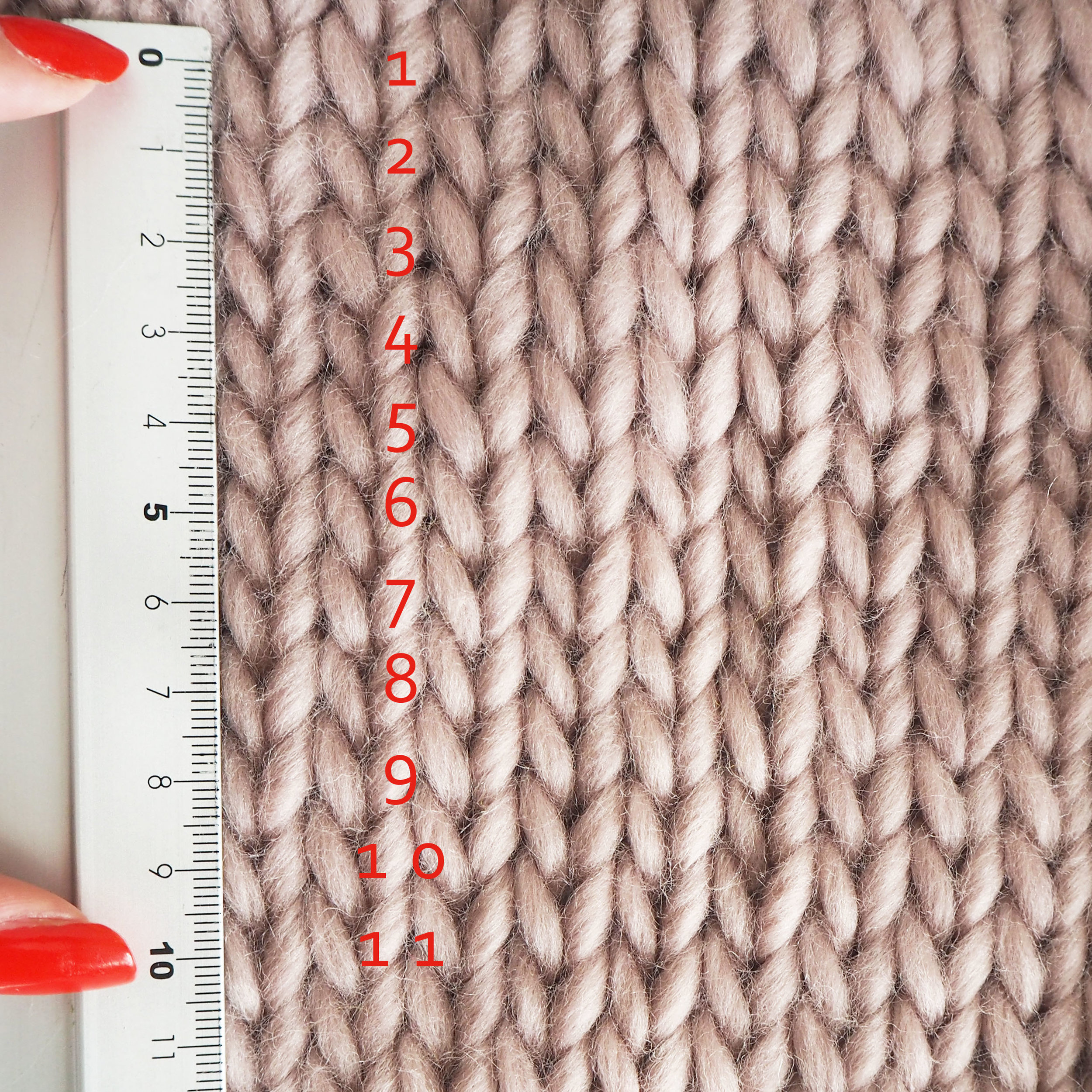
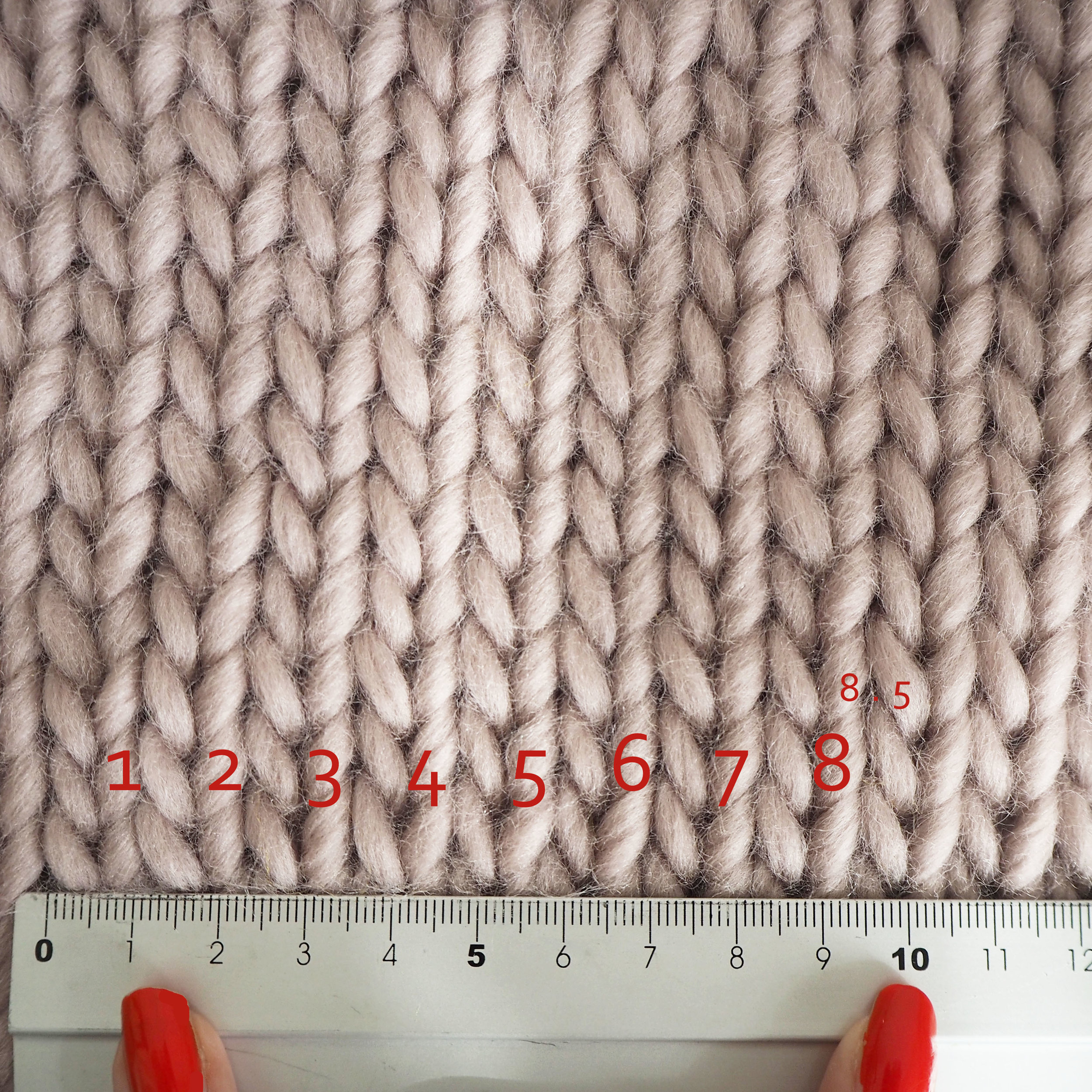
OK, then what?
So once you’ve knit your swatch and checked your tension you have some options:
If your tension is the same as the pattern then that’s fantastic, get knitting!
If your tension is tighter than the pattern, you’ll have more stitches and/or rows than you’re supposed to, in which case you can either practice trying to loosen your tension so you’re not pulling the yarn as tight but rather placing it, OR you can try using needles that are one size larger. If you increase your needle size make sure you do another swatch to check if it’s right.
If your tension is looser than the pattern, you’ll have less stitches and/or rows than you’re supposed to. Just as above, you can practice tightening your tension and see how you get on or you can go down a needle size.
Adjusting the pattern is another option for both however I’d only recommend if for more experienced knitters. If your tension is too tight and you can’t/don’t want to change it then you can adapt the pattern to account for that. Work out how much smaller your knitting will be across the whole piece and then add stitches to compensate for that. Equally if it’s too loose you might want to loose a few stitches or rows. There’s a bit of maths involved (which I won’t go into today!) which is why I suggested only experienced knitters give it a bash.
